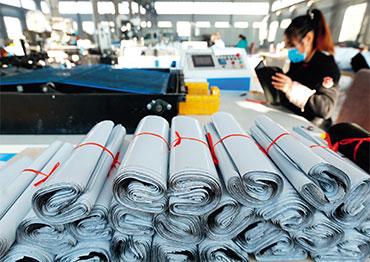The market for degradable plastics in China had been growing at a moderate rate since the country first restricted plastics use around 2008. The market for degradable plastics climbed from 2.9 billion yuan (US$449.2m) to 6.15 billion yuan (US$952.6m) between 2013 and 2019, with an average annual growth rate of nearly 14 percent, according to data from huaon.com, an industrial research provider. Between 2013 and 2017, growth in capacity for degradable plastics manufacturing either declined or remained unchanged.
Industry insiders told NewsChina that the market was sluggish for years and production capacity of degradable materials and products was limited. Many companies that entered the field early on were forced out due to lack of orders until a surge in 2019, shows data from consultancy Zhongjin Qixin.
“At the end of 2018, a bunch of degradable plastic suppliers went bankrupt due to severe overcapacity. As a result, companies are cautious about entering the arena,” said Li Erqiao, general manager of a leading drinking straw supplier in Yiwu, Zhejiang Province.
“Before the policy took effect in 2020, domestic demand was small. Eighty percent of our materials were sold overseas,” said Guo Defan, a sales manager of Kingfa Science and Technology, one of the largest suppliers of degradable materials in China.
“We’ve received daily orders for degradable plastic bags since the end of 2020,” said Hao Jiahua, vice chief manager of a producer in Suzhou, Jiangsu Province. “Due to capacity limits and the Chinese New Year holiday, our factory is already operating at full capacity and still has to delay orders.”
“There are shortages of both manufacturing equipment and raw materials,” he added.
Hao said his company has been able to produce degradable plastic bags since June 2020. “But when we promote the products to clients, most of them took a wait-and see attitude [about the ban]. It wasn’t until around December that orders began coming in,” Hao said.
According to Hao, higher prices deterred customers at first. Even degradable bags, which are the cheapest plastic bag substitute, are double or triple the price of conventional plastic bags. “So customers were not willing to make a change before the policy landed. Our clients, mainly supermarkets in Zhejiang and Jiangsu provinces and Shanghai, responded more quickly out of consideration for their corporate images. But others started to take action only after feeling the pressure from random inspections and fines.”
The surge in demand for degradable products quickly spread through the supply chain. Supplies of raw materials for degradable plastics, such as PLA (polylactic acid, a polyester made from biomass), PBS (polybutylene succinate, a petroleum-based polymer) and PBAT (polybutylene adipate terephthalate, a biodegradable copolymer), all ran short, which further increased prices.
“The severe imbalance in supply and demand sometimes doubled or tripled prices throughout the entire degradable industrial chain, from raw materials and processing costs to retail,” Ji Junhui told NewsChina. As an example, Ji said PBAT prices went from around 19,000 yuan (US$2,943) per ton in November 2020 to around 28,000 yuan (US$4,337) in February 2021.
He pointed out that some manufacturers are seizing the opportunity to price gouge, which will affect the overall industrial ecology. “But it’s predictable that as more companies and projects join in, supplies will increase and prices will return to a reasonable range,” Ji said.

 Old Version
Old Version
